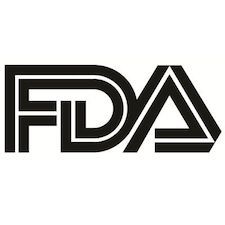FDA Approves Ruxolitinib Cream 1.5% for Nonsegmental Vitiligo
With this decision, ruxolitinib cream has become the first treatment approved by the FDA for the repigmentation of skin in vitiligo.

The US Food and Drug Administration (FDA) approved ruxolitinib (Opzelura) cream 1.5% for the treatment of nonsegmental vitiligo in adults and pediatric patients 12 years and older, making it the first FDA-approved treatment for repigmentation of the skin in patients with the condition.
The approval was bolstered by phase 3 data from the TRuE-V1 and TRuE-V2 trials presented at American Academy of Dermatology (AAD) 2022 Annual Meeting, which found that roughly 3 in 10 patients with vitiligo who were treated with the topical cream achieved ≥90% improvement on facial vitiligo regimentation after 52 weeks of treatment.
“The fact that I could finally be able to have a conversation with my patients saying ‘there is a cream that I have, it's not a topical steroid, it's very targeted and it's going to sort of work slowly but steadily over the course of several weeks, and you're going to see continued progress over time’, I think that matters,” said Raj Chovatiya, MD, PhD, Assistant Professor at the Department of Dermatology at Northwestern University Feinberg School of Medicine, in a recent interview.
“One of the big things that drives adherence in our patients is seeing something that's going to work ,something that's going to continue working, and something that makes them feel confident that it's not going to cause adverse events, all 3 of those boxes seem to be checked by the phase 3 trial program for topical ruxolitinib.”
In an interview with HCPLive, leading study author of the TRuE-V1 and TRuE-V2 trials David Rosmarin, MD, Vice Chair for Research and Education at Tufts Medical Center, spoke of how an approval of ruxolitinib cream would allow for dermatologists to treat a greater number of patients who may not have access to other treatment options.
“Many patients don't have access to other standard treatments like phototherapy and oftentimes our calcineurin inhibitors and topical corticosteroids don't give patients the results that they're looking for,” he noted. “So, having this option for patients gives us a lot of hope to help people who want it.”
The decision was anticipated to be announced in mid-April, but was delayed by theFDA to further review the efficacy and safety of the topical therapy.
“The drug has already been approved for atopic dermatitis, so the assumption would be, ‘Well they already approved it, so what do you need to review at this point?’,” said prominent vitiligo researcher John E. Harris, MD, PhD, professor and chair of the Department of Dermatology at UMass Chan Medical School in a recent interview with HCPLive. “There’s always a question whether patients with different diseases will react differently to the same drug, and sometimes the FDA wants to consider what’s the disease that we’re targeting, and balance the benefit with the potential safety issues and do that with each disease.”
Karan Lal, DO, MS, FAAD, of the Schweiger Dermatology Group and member of The Society for Pediatric Dermatology and former colleague of Harris’, considered ruxolitinib cream to be “a true medical breakthrough”, noting that the demand for topical therapy would be high in the weeks following the approval.
“I think it's going to open up a great conversation, and it's going to give people options,” Lal said. “People don't like being pigeonholed. People want options, and I think we're going to be we're going to be in this position where we're going to have a medication that is safe to use.”
Lisa Arkin, MD, member of the Society for Pediatric Dermatology, University of Wisconsin School of Medicine & Public Health and American Family Children's Hospital, echoed Lal’s sentiments, describing the cream as a “huger game changer in what we can offer our patients”.
“This is a visible skin disease, but we're looking at ongoing autoimmunity in the skin, and that's really the celebration here: that we're one step closer to understanding not just how to treat vitiligo and alopecia areata and atopic dermatitis, but a whole range of diseases that present in the skin that leverage similar and shared immunology,” Arkin said.
Related Content
Exploring New Possibilities in Vitiligo Therapy
Global Perspective of Vitiligo Largely Positive, Survey Shows
Camouflage, Psychotherapy with Vitiligo Management Improves Patient Care